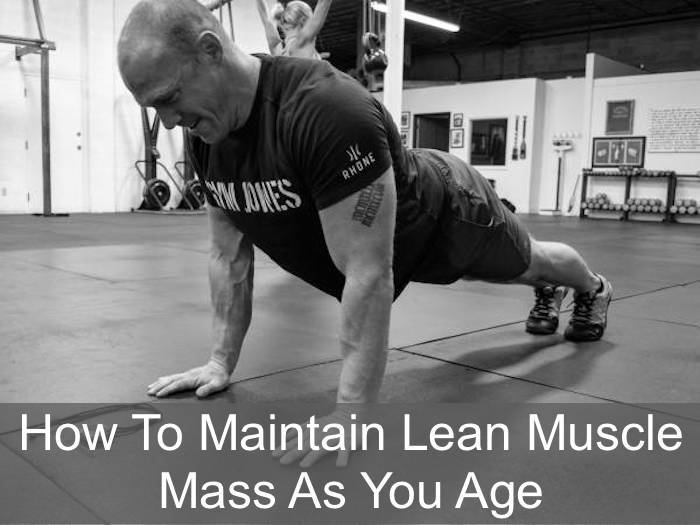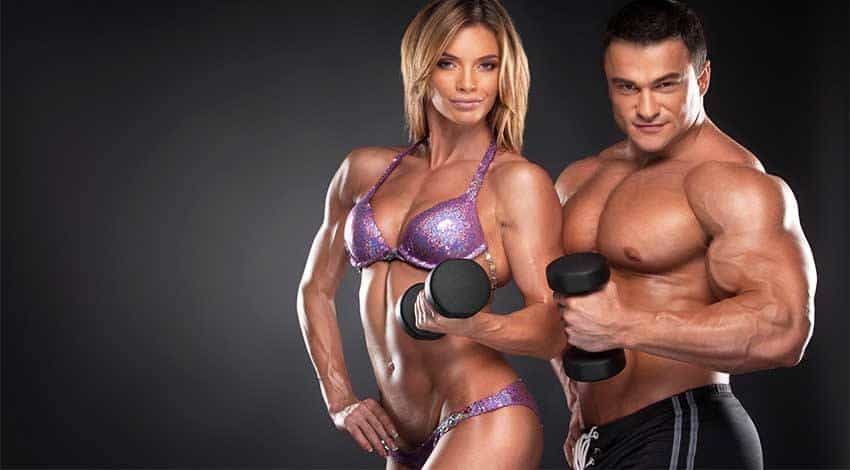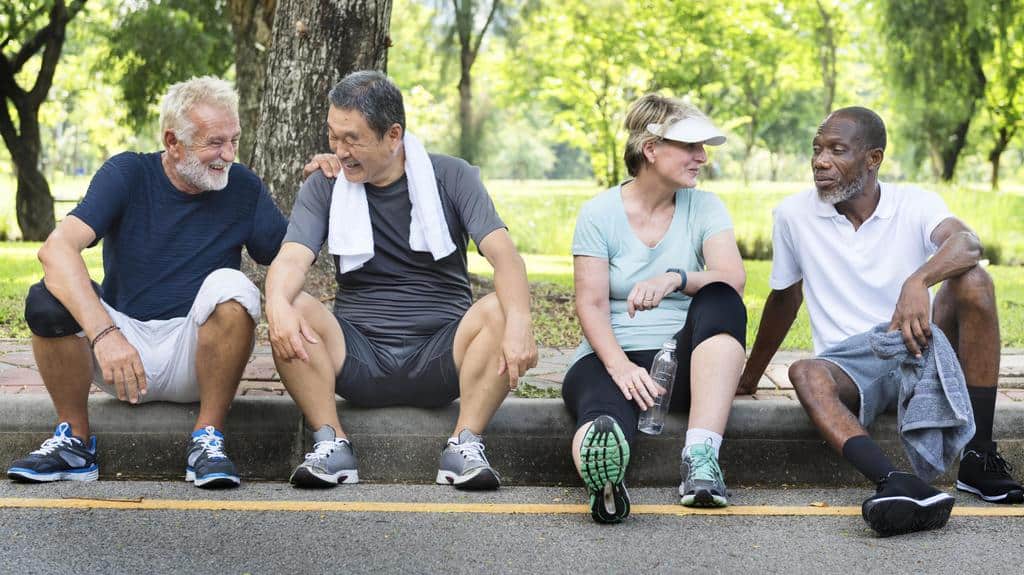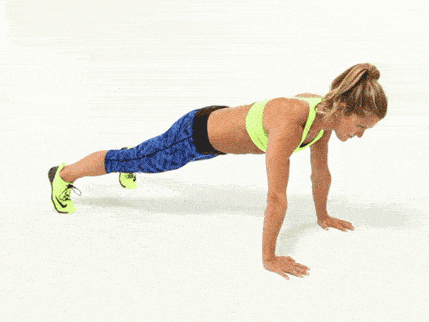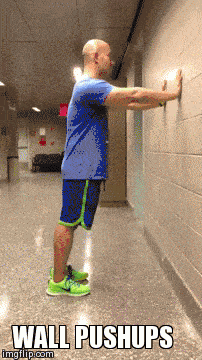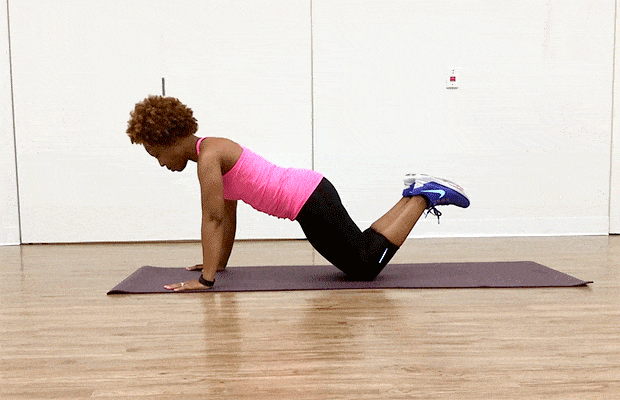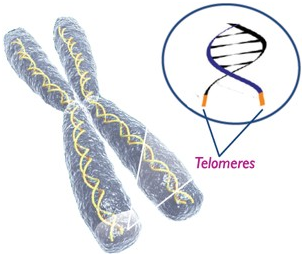How To Maintain Lean Muscle Mass As You Age
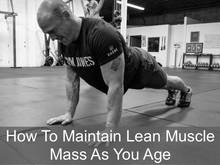
You can maintain lean muscle mass as you age by simply doing some push-ups and squats a few times a week, and walking up some hills at a brisk pace. Learn why this is vitally important and how to do it.
JUST IN case you’re wondering, by “maintain lean muscle mass” I’m not talking about this much muscle, because it’s unnecessary for healthy, functional longevity:
Rather, this is enough lean muscle to live long and strong (although I do prefer a bit more):
If you’re not already, someday you’ll be over 30, and will begin to lose eight percent of your lean muscle mass each decade, unless you do resistance training.
By the time you reach 60 years of age, the muscle loss accelerates even faster!
If you’re not doing resistance training to slow down or maintain muscle mass, you’re heading for a slow-moving, injury prone, lackluster middle age and beyond.
Without adequate muscle, living long and strong, as I like to say, is unlikely. Instead, as time has its way with you, gradually you’ll begin to bend over, lose muscle (sarcopenia), get flabby and shuffle along until one day you stumble over a toothpick, fall and break your hip.
Note: A big reason that hips break when the elderly fall is because their bone density is so low due to the lack of weight-bearing exercise. (See Harvard Health’s review.)
There are three basic reasons that muscle mass and strength are vitally important to how well we age, says nutritionist Cheryl Foseberg of NBC’s The Biggest Loser fame, and they have to do with:
- Activity level,
- Metabolism, and
- Fat
Let’s dig into these a wee bit.
Activity Level
Like most children, it’s likely you were a whirling dervish back in your whippersnapper days. Remember all the running around you did? All the sports and activities you enjoyed? That activity built lean muscle.
Then time happened. Lots of it. Work, family, responsibilities and the couch happened. Muscles atrophied as girth expanded. Your bones got nearly as soft as your tummy, despite the focus some put on preventing osteoporosis.
Ms. Forberg points out:
“Women are likely more focused on keeping their bones dense and strong than on maintaining their muscles, because the medical establishment, society and the media have put more focus on preventing osteoporosis. However, when your muscles are weak, your bones are more likely to be weak.”(1)
Metabolism
Sure, exercise burns calories and fat, but if that exercise is tailored to build muscle, more calories are used just to keep up the muscle, even if you’re couch surfing.
As WebMD puts it
“When you exercise, you use muscle. This helps build muscle mass, and muscle tissue burns more calories — even when you’re at rest — than body fat… 10 pounds of muscle would burn 50 calories in a day spent at rest, while 10 pounds of fat would burn 20 calories.” (2)
The bottom line: You can “burn” up to two and one-half times more calories with muscle than fat.
Click here for a graphical depiction.
The bar graph below shows in Part A what percent proportions men and women’s bodies are made from bone, adipose tissue (fat), skeletal muscle and residual mass (organs and the like); and in Part B how such tissues affect Resting Energy Expenditure (REE) — the whole-body metabolism during a time period of strict and steady resting conditions.
Collectively, skeletal muscle, bone, and adipose tissue contributed to 69.8 and 73.4% of body mass in men and women; whereas respective contributions to REE were 30.9 and 31.7%, respectively. The small residual mass, 30.1% of body mass in men and 26.6% in women, contributed to 69.1 and 68.3% of predicted REE, respectively. (3)
As fascinating as all this may be, what I want to point out is how much more muscle increases metabolism (measured here as REE) than muscle, as show in Part B as the white segments in the bars (muscle, or “SM”) as compared to the light grey segments (fat, or “AT”).
Bone is bone, as in “your thigh bone’s connected to your knee bone” nursery rhyme.
Adipose Tissue is referred to as “AT” in the bar graph. Basically, this is all the body fat in a body.
Skeletal Muscle is referred to as “SM” and is the long about way of saying “muscle”.
Residual mass, the difference between body mass and other measured components (i.e., adipose tissue, skeletal muscle, and bone), includes all the high-metabolic-rate tissues and organs such as heart, brain, liver, kidneys, spleen, and gastrointestinal tract.
Fat
Unless you’re preparing for a marathon or the Tour de France, if you are not exercising to keep up or build muscle, fat happens, often because of the “insulin effect”
When you eat, the pancreas produces insulin to transport the sugar/glucose broken down from the food (mostly carbs). Where does it go, this glucose? If you need as soon as it’s available, it’s used as fuel. If not, it gets stored into your muscles and liver. If those have enough glucose storage, it gets shuttled into your fat cells, and viola – you get fatter.
Muscles consume glucose big time; the more of it you have, the more glucose gets stored in muscle, and less in fat. The problem too many of us face as we age and gradually more and more of our lean muscle tissue gets displaced by fat, our blood sugar elevates, putting us at greater risk for Type 2 diabetes, which in turn raises your risk of heart disease, stroke and, perhaps, Alzheimer’s.
Avoiding all those nefarious diseases is a pretty good incentive to muscle up, yes?
Read: How To Strengthen Your Pancreas, Improve Digestion and Lower Blood Sugar All By Yourself.
How To Maintain Lean Muscle Mass
The good news is that muscle atrophy is a preventable fact of aging if you challenge your muscles with muscle-building activities, such as calisthenics and weight lifting. Or even walking up steep hills with a loaded back-pack.
What you don’t use, you lose.
Surprisingly, people in their 90s can show impressive strength gains with exercise, such as Dr. Charles Eugster and Phyllis Sues; not to mention those youngins, Sam Bright and Ernestine Shepard.
 Read: Four Masters Who Defy Age and Prove That You Can Too!
Read: Four Masters Who Defy Age and Prove That You Can Too!
Again, nutritionist Ms. Forberg:
“As you age, a number of changes occur in your skeletal muscles, which are the ones that move your arms, your legs and the rest of your body. You lose muscle mass — you simply have less of the stuff. Your nervous system becomes less efficient at prompting your muscles to move. Fat and connective tissue start developing within your muscles, leaving less muscle tissue to contract to move your body.” (1)
If any of those biologically young athletes depicted above inspire you, begin some type of resistance training to keep your muscles from shrinking from non-use, make sure you’re ingesting adequate amounts of protein and test to see if your hormones are working properly.
Maintain/Build Muscle with Resistance Training
Young, old or in between, if you don’t use your muscle, you’ll lose it. Surely you’ve noted what studies show: even young people’s muscle mass and strength quickly deteriorate when confined to bed rest.
Building or maintaining muscle requires resistance training. To keep your legs strong (bone and muscle), you don’t have to load a barbell with weights and squat yourself to a hernia. Rather, walk hills, and/or just squat with your hands out in front of you or on your hips.
To keep your upper body strong (bone and muscle), you don’t have to join a gym, lie on a bench and lift a barbell off your chest. Rather, do push-ups. If you can’t do any or many with your legs straight behind you and balanced on your hands and feet, then balance between hands and knees. (Just don’t let your mid section slump so that your pelvis hits the floor first, or let your head droop so low that your nose touches the floor whilst your chest is still 12 inches above it.)
For your lower body, squat.
For your upper body, do push-ups.
If the push-ups are too hard, do them on your knees or against the wall.
Here’s a simple yet effective way to add push ups and squats into your daily routine:
- Get out of bed.
- Bathroom duty.
- Drink a large glass of filtered water.
- Take an invigorating shower.
- Do 80% of your maximum push-ups against the wall or on the floor, however you can do them.
- Get up and do 80% of your maximum squats.
- Take 10 deep inhalations and exhalations.
- Repeat the push-ups and squats twice more for a total of three sets.
- Do this routine at least four times per week.
No, you won’t become Hercules with this routine. But if have only a wee bit of desire to build some muscle and strength, it’s something you just might be willing to do.
Want to add some cardiovascular conditioning along with your resistance training?
Try this:
Maintain Lean Muscle Mass With Adequate Protein
The current RDA (Recommended Daily Allowance) for protein — the amount that people are supposed to get each day — is 0.8 grams per kilogram of body weight for adults. So if you weigh 200 pounds (91 kilograms), you need 73 grams of protein daily. You 150-pounders need 55 grams. A little less is OK, especially if you hold a lot of body fat. (Fat doesn’t need protein.)
How to get it? I recommend you do it the way I do: fish, some diary, eggs and protein supplementation, such as whey protein. (See Diet 101.)
The “Biggest Loser” plan that Cheryl Forberg espouses strives for getting 30% of your daily calories from lean protein 45 percent from complex carbs and 25% from “good” fats, like omega-3 (avocado, walnuts, chia seeds, flax seeds, hemp seeds).
Maintain Lean Muscle Mass By Tweaking Your Hormones
Women on hormone replacement therapy (HRT) may know firsthand that extra estrogen can cause a weight gain in fat, not muscle. It’s certainly in your best interest to discuss the estrogen and progesterone balance of your HRT with your doctor. Review with him/her a good exercise routine, and if you’re an exercise neophyte, do yourself a favor and begin your exercise life under the guidance of a personal trainer. A good one is truly worth it.
Men over forty need to know their testosterone numbers. Mike Mahler’s Aggressive Strength Testosterone Booster (affiliate link) will help, as hundreds of his customers attest on his website.
The smartest thing you can do is to get your hormones tested. The Life Extension Foundation offers many important blood tests (affiliate link) and makes it easy to do, offers good prices and reviews your results with you.
Go here and look for the Male and Female Panel under Top Best Sellers in the right hand side panel.
Maintain Lean Muscle Mass and Lengthen Your Telomeres
At this point it should be unsurprising that research shows that your biology responds to exercise and you may live longer and better because of it.
Your telomeres tell the tale.
German scientists tested several groups of men and women with the aim of examining the life span of their cells. They were divided into several groups depending on their level of exercise habits (or none):
- Professional athletes in their twenties who run an average of 45 miles per week;
- Middle-aged runners (averaging 51-years old) who run 50 miles per week; and
- Two sedentary groups (non-exercisers), one young and one middle-aged.
Here’s what the researchers discovered:
The middle-aged exercisers looked much younger than the sedentary middle-aged group.
Even more surprising was what was happening beneath the surface. The white blood cells of both the active and slothful young adults had similar-size telomeres, but those of the middle-aged subjects had startlingly different telomere lengths.
What are telomeres?
Telomeres are tiny caps on the end of DNA strands. The 2009 Nobel Prize in medicine was for the discovery that their function is to protect the reproducing quality of DNA. Every time cells divide and replicate the length of the telomere cap is snipped, a process believed to protect the DNA, but with the unhappy result of shortening the telomeres. If the telomeres becomes too short, the cell dies or goes into a suspended state.
Telomere length is a reliable marker of age. The shorter they become, the older your body becomes, irrespective of your chronological age.
It’s not surprising that both the active and inactive young people in the study had telomeres of the same length, as their bodies have not experienced enough multiple cell divisions to make a difference. But that’s not the case with the middle-aged subjects.
Was there a difference between the telomere length of the middle-aged?
When the researchers measured the telomeres of the middle-aged subjects, those of the sedentary subjects were 40% shorter than the sedentary young subjects, BUT THE ACTIVE MIDDLE-AGED SUBJECTS HAD TELEMORE LENGTHS ONLY 10% SMALLER THAN THE SEDENTARY YOUTHS!
Telomere loss was reduced by about 75% in the aging runners; meaning, the act of exercising reduced their aging process substantially at the molecular level.
The researchers are hopeful that it doesn’t require the exercise equivalent of running 45 miles each week to gain this longevity benefit. That amount of exercise is beyond all but the most disciplined and energized among us, particularly at the middle-age mark.
The speculation is, however, that intense exercise regularly performed over a long period will yield similar benefits. The challenge is to choose a form of exercise that works for you, and then work at it. Grab a friend or two and get the buddy system working for you, or join a gym and get some qualified guidance.
It’s sure worth it, because more important than yielding cardiovascular, strength, or appearance benefits, exercise may improve telomere biology. The older I get, the better that sounds. Surely it’s great to know that something as simple as exercise slows the aging process.
Your Takeaway
Don’t dwaddle!
Muscle up, cause muscle does a body good!
Just follow the squat/push-up morning plan I posted above and see what happens. You just might be encouraged to do more.
Want more articles about how to grow or maintain lean muscle mass?
You’re in the right place. Check out these:
Here’s Why Exercise Slows the Aging Process.
The Functionally Fit Fast Workout.
How To Maintain Lean Muscle Mass As You Age
The Many Benefits of Strength Training… Even For You, Graybeard
7 Life-saving Reasons Exercise Is The Ultimate Anti-aging Pill
Why You Must Exercise for Longevity and How To Do It
Last Updated on June 14, 2023 by Joe Garma

